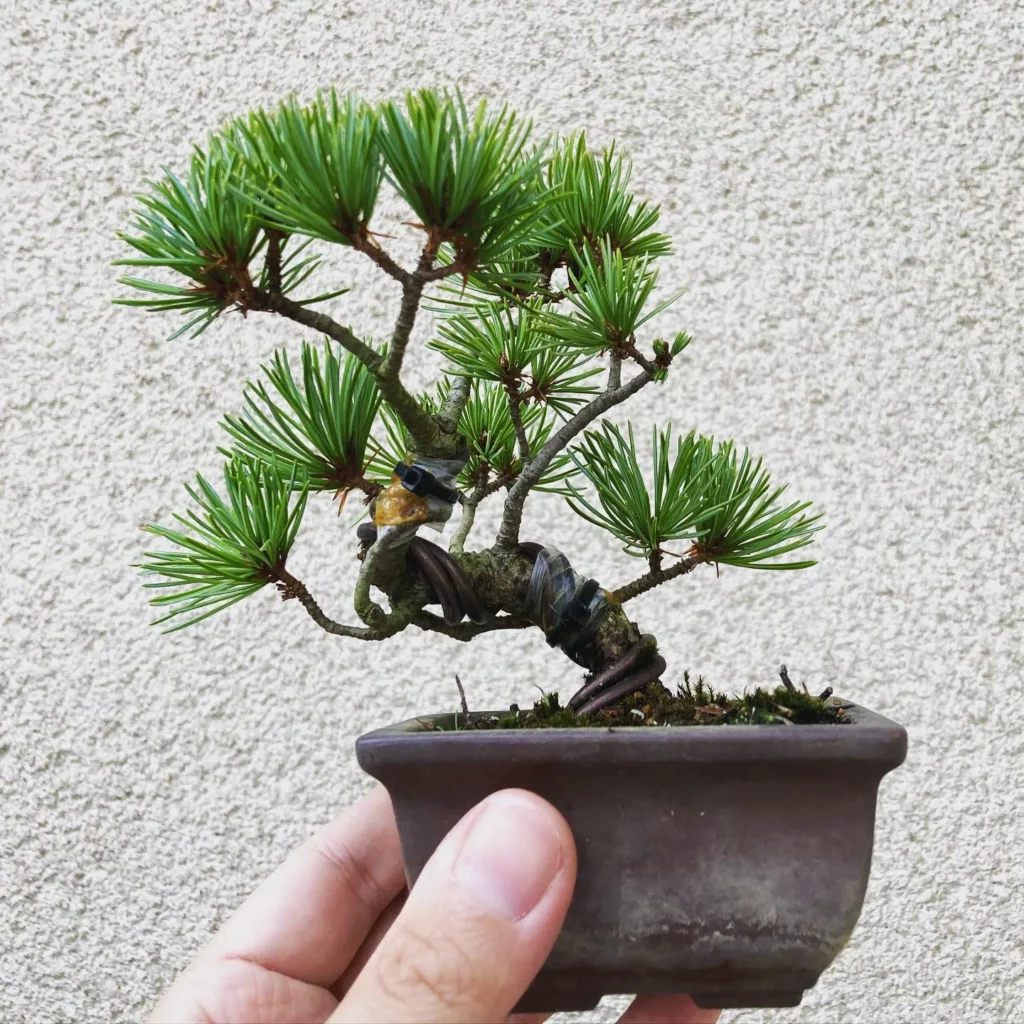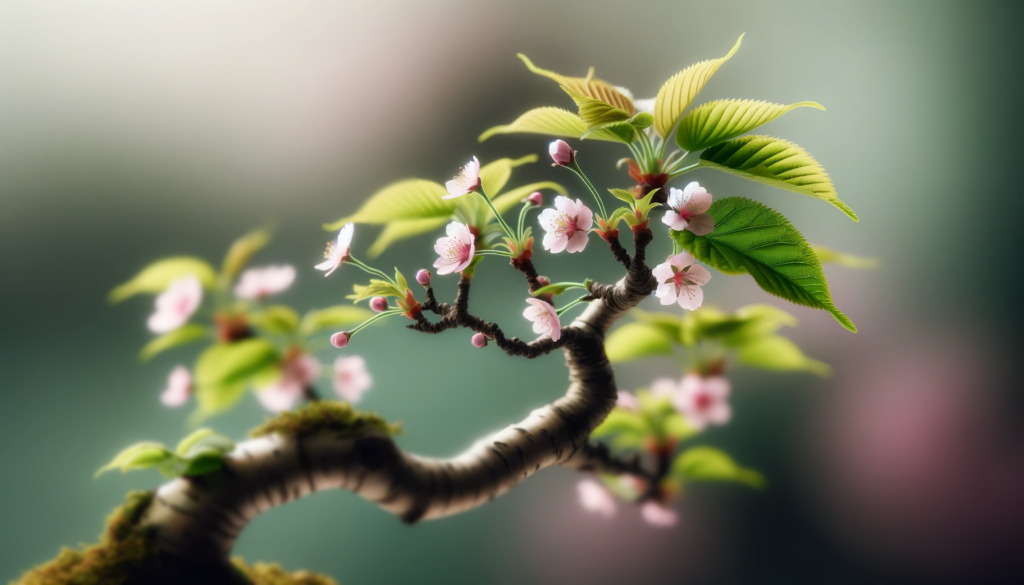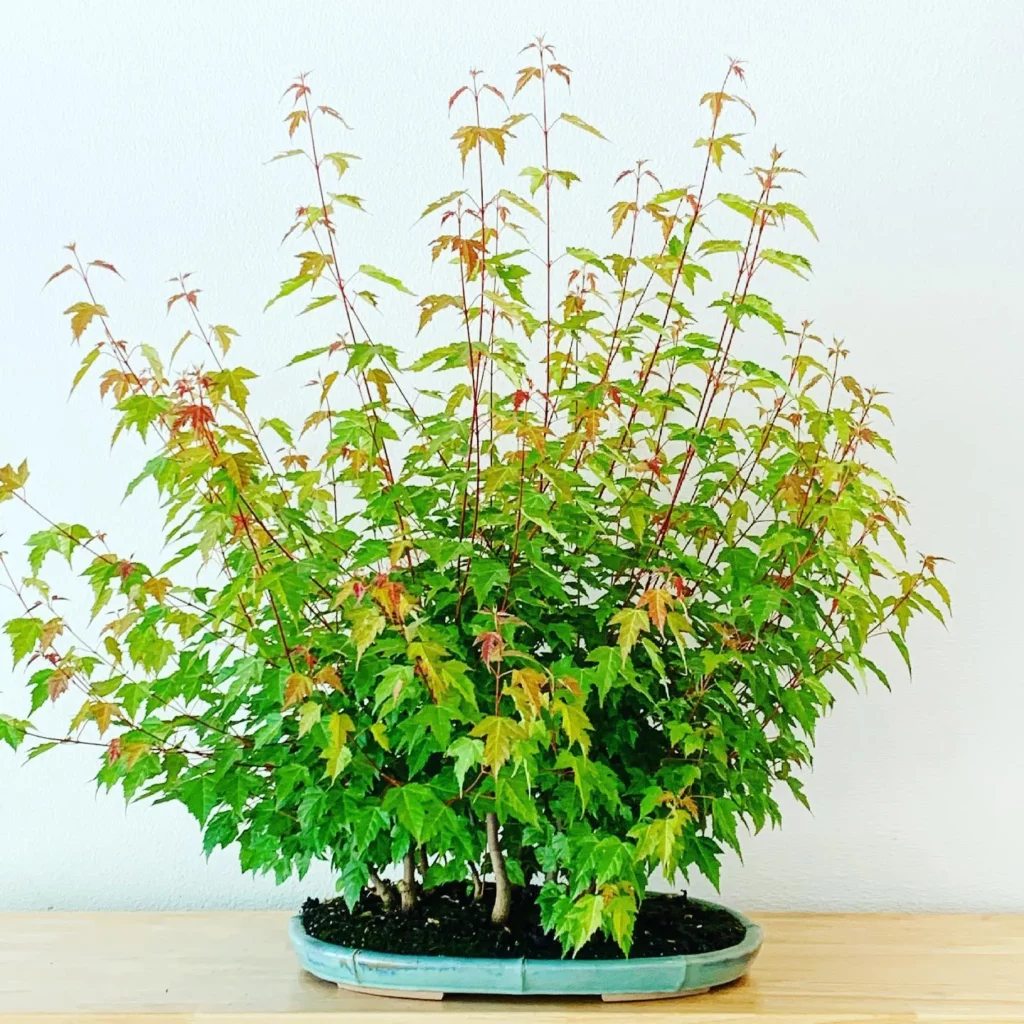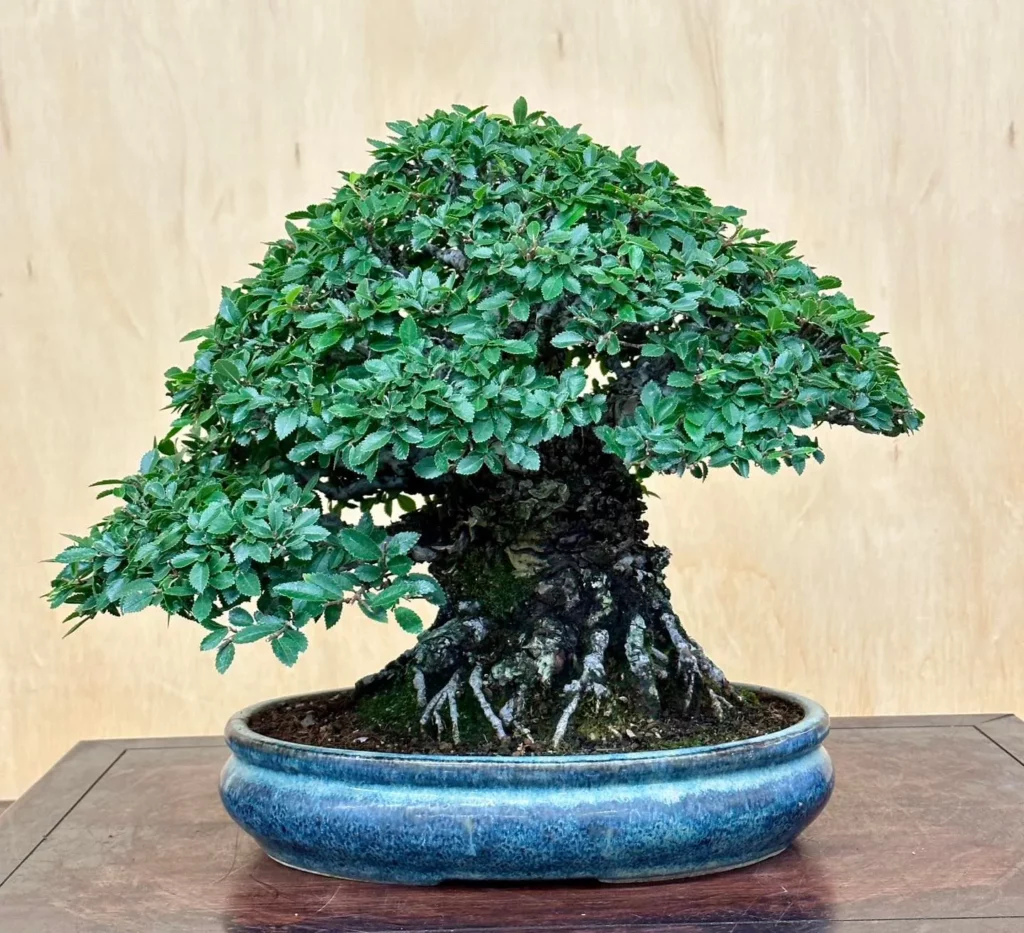Welcome to our guide on growing and caring for Wisteria bonsai! The Wisteria bonsai is a charming miniature version of the beautiful flowering shrubs found in various countries. While it may take some care and patience, the reward of fragrant blossoms is well worth it. Understanding the characteristics and needs of Wisteria bonsai is essential for successful cultivation. In this article, we will provide you with essential tips to help your Wisteria bonsai thrive and flourish.
Key Takeaways:
- Wisteria bonsai trees have vine-like tendencies with thicker trunks.
- They require full or partial sun, but protection from strong winds is important.
- Water generously during the growing and blooming cycle, but avoid waterlogged soil.
- Use a specialized low-nitrogen fertilizer to promote flower growth.
- Repot younger trees annually and older trees every two years using fresh soil.
Appearance of Wisteria Bonsai



When it comes to the appearance of Wisteria bonsai trees, they possess a distinct and captivating charm. These miniature versions of the flowering shrub display vine-like tendencies, with their branches growing vigorously and climbing and curving in captivating patterns. The trunks of Wisteria bonsai trees tend to be thicker, providing a sturdy foundation for their upward growth.
The branches of Wisteria bonsai trees are covered in medium to dark brown bark, adding to their natural beauty. The leaves of these bonsai trees are small and green, creating a lush and vibrant canopy. But perhaps the most enchanting feature of Wisteria bonsai trees is their blooms. These delicate flowers bloom in clusters and emit a fragrant aroma that can fill the air. The blossoms can range in color from shades of blue and lavender to pure white, adding a touch of elegance to any bonsai collection.
Key Points:
- Wisteria bonsai trees have vine-like tendencies with thicker trunks.
- The branches grow vigorously, climbing and curving, and are covered with medium to dark brown bark.
- The leaves are small and green, creating a lush and vibrant canopy.
- The blooms are fragrant and can be blue, lavender, or white, adding a touch of elegance to any bonsai collection.
Light Requirements for Wisteria Bonsai



Proper lighting is crucial for the healthy growth of Wisteria bonsai trees. These beautiful plants thrive in full sun or partial sun conditions. When grown outdoors, it is important to place your Wisteria bonsai in a location that receives ample sunlight throughout the day. This will provide the necessary energy for photosynthesis and promote vigorous growth.
However, it is important to note that while Wisteria bonsai trees enjoy sunlight, they should also be protected from strong winds. The delicate branches and flowers can be easily damaged by strong gusts of wind. Placing your bonsai in a sheltered area or providing windbreaks can help prevent potential harm to your tree.
When grown indoors, it is essential to place your Wisteria bonsai near a bright window where it can receive sufficient sunlight. If natural light is limited, you can supplement it with artificial grow lights that mimic the spectrum of natural sunlight. This will ensure that your bonsai gets the light it needs to thrive.
- Wisteria bonsai thrives in full sun or partial sun conditions.
- Outdoor bonsai should be placed in a location with ample sunlight.
- Protect your bonsai from strong winds to prevent damage.
- Indoor bonsai should be placed near a bright window or supplemented with artificial grow lights.
Watering Wisteria Bonsai



To ensure the healthy growth and vibrant blooms of your Wisteria bonsai, proper watering is crucial. Wisteria bonsai requires a generous amount of water, especially during its growing and blooming cycle. Adequate watering ensures that the roots receive the necessary moisture to support the tree’s overall health.
One effective watering technique is to set the pot in a tray of water. This allows the roots to absorb water from the tray as needed. It is important to remove the tray once the top of the soil is wet to prevent overwatering and root rot. A good rule of thumb is to wait until the soil surface begins to dry out before watering again.
Watering Tips for Wisteria Bonsai:
- Check the soil moisture regularly by inserting your finger about an inch into the soil. If it feels dry, it’s time to water.
- Water the bonsai thoroughly, ensuring that the entire root ball is moistened.
- Avoid watering the leaves and flowers directly to prevent foliage diseases and damage.
- During hot summer months or dry periods, increase the frequency of watering to prevent the soil from drying out completely.
Fertilizing Wisteria Bonsai



Proper fertilization is crucial for the healthy growth and development of your Wisteria bonsai. By providing the right nutrients, you can encourage lush foliage and beautiful blooms. Here are some tips to help you fertilize your Wisteria bonsai effectively:
Choose the Right Fertilizer
- Select a specialized fertilizer formulated for Wisteria bonsai. These fertilizers usually have a balanced NPK ratio specifically designed to meet the tree’s nutritional needs.
- Opt for a fertilizer with a lower nitrogen content to prevent excessive leaf growth at the expense of flowers.
- Read the instructions on the fertilizer packaging and follow the recommended dosage. Over-fertilization can damage the tree and burn its roots.
Fertilize During the Growing Season
Wisteria bonsai should be fertilized during the growing season, which typically begins in early spring and lasts until early fall. This is when the tree is actively producing new foliage and developing flower buds. Apply fertilizer every two to four weeks to provide a steady supply of nutrients.
Apply Fertilizer Correctly
When applying fertilizer, make sure to distribute it evenly across the soil surface, taking care not to concentrate it in one area. This will ensure that all the roots receive adequate nutrition. Water the tree thoroughly after fertilizing to help the nutrients penetrate the soil and reach the roots.
Potting Wisteria Bonsai



When it comes to potting your Wisteria bonsai, there are a few important considerations to keep in mind. First and foremost, you’ll want to choose a wide and deep pot that allows for optimal root growth. This will provide stability and room for the roots to spread, contributing to the overall health and vigor of your bonsai.
When repotting your Wisteria bonsai, be sure to use fresh soil to minimize the risk of disease. This will provide the necessary nutrients and drainage for the roots to thrive. Additionally, it’s important to carefully remove the bonsai from its current pot, gently untangling any tangled roots and pruning any damaged or overly long roots before repotting.
Once your Wisteria bonsai is in its new pot, be sure to water it thoroughly to help settle the soil and ensure proper hydration for the roots. It’s also a good idea to place the newly potted bonsai in a shaded area for a few days to allow it to recover from the repotting process.
Potting Wisteria Bonsai: Key Points
- Choose a wide and deep pot to accommodate root growth
- Use fresh soil during repotting to minimize the risk of disease
- Untangle and prune roots before repotting
- Water thoroughly and place in a shaded area to recover
Propagation of Wisteria Bonsai
Propagating Wisteria bonsai can be done through two methods: seeds and cuttings. Both techniques have their advantages and challenges, so it’s important to understand the process before getting started.
Propagation from Seeds
If you decide to propagate Wisteria bonsai from seeds, it’s important to note that it can be a lengthy process. Wisteria seeds have a hard outer shell, which means they require scarification before planting. This can be done by lightly sanding the seed coat or soaking the seeds in warm water for 24 hours. Once scarified, the seeds can be planted in a well-draining soil mix and kept in a warm, sunny location.
Propagation from Cuttings
Another way to propagate Wisteria bonsai is by taking cuttings from mature plants. This method offers a faster way to achieve a mature and blooming tree. To propagate from cuttings, select a healthy stem with at least three nodes. Remove the leaves from the lower half of the cutting and dip the cut end in rooting hormone.
Plant the cutting in a well-draining soil mix and keep it in a warm, humid environment. Mist the cutting regularly to maintain high humidity levels. It’s important to note that not all cuttings will successfully root, so it’s advisable to take multiple cuttings to increase the chances of success.
Growth and Development of Wisteria Bonsai
Growing and nurturing a Wisteria bonsai tree is a labor of love that requires patience and dedication. As a Wisteria bonsai matures, it undergoes a remarkable transformation, reaching its full potential with stunning blooms and an elegant form. Understanding the growth and development process is essential for creating a thriving and visually appealing Wisteria bonsai.
After planting a young Wisteria bonsai, it typically takes around 10 years for the tree to fully establish and begin producing its beautiful flowers. During this time, regular pruning is crucial to shape the tree and encourage the growth of buds that will eventually blossom into fragrant clusters of blooms. Pruning in the fall helps to maintain the desired shape and stimulate flower production by redirecting the tree’s energy.
Promoting Growth
Proper care and maintenance are key to promoting healthy growth and development in your Wisteria bonsai. This includes providing adequate sunlight, water, and nutrients. Wisteria bonsai thrives in full sun or partial sun, so ensure it is placed in a location that receives ample light throughout the day. However, protect the tree from strong winds, as they can damage the delicate branches and flowers.
Watering is crucial to sustaining the growth of your Wisteria bonsai. These trees have a high water requirement, particularly during their active growing and blooming periods. To ensure the roots receive sufficient moisture, it is recommended to set the pot in a tray of water and remove it once the topsoil is wet. This allows for proper absorption while avoiding waterlogged conditions.
Maintaining a Desired Shape
Regular pruning and training are essential for creating and preserving the desired shape of your Wisteria bonsai. As the branches grow vigorously, it is important to carefully select which ones to keep and remove any that disturb the overall aesthetic. Proper pruning techniques, such as pinching back strong growth and wiring, help guide the tree’s growth and maintain its bonsai form.
Pests and Diseases of Wisteria Bonsai
While Wisteria bonsai is a beautiful and rewarding tree to cultivate, it is not immune to pests and diseases. Being aware of the potential issues can help you keep your tree healthy and thriving.
Pests:
Some common pests that can affect Wisteria bonsai are aphids, scale insects, and spider mites. These tiny creatures can suck the sap from the leaves and stems, causing damage and weakening the tree. Regular inspection of your bonsai can help you spot any infestation early on.
If you notice any pests, you can try gently washing them off with a spray of water. For more severe infestations, there are insecticidal soaps and horticultural oils specifically designed for controlling these pests. Remember to follow the instructions on the product carefully to avoid any harm to your tree.
Diseases:
Powdery mildew and root rot are two common diseases that can affect Wisteria bonsai. Powdery mildew appears as a white, powdery substance on the leaves and stems, while root rot is caused by overwatering and can lead to decay and wilting of the roots.
To prevent powdery mildew, ensure good air circulation around your bonsai tree and avoid overhead watering. If powdery mildew does occur, there are fungicides available that can help control the disease.
To prevent root rot, it is important to avoid overwatering and ensure that the soil has good drainage. Be mindful of the watering needs of your Wisteria bonsai and adjust accordingly to prevent waterlogged roots.
By regularly inspecting your Wisteria bonsai, providing proper care, and taking immediate action when pests or diseases are detected, you can help protect your tree and ensure its continued health and beauty.
FAQ
What is Wisteria bonsai?
Wisteria bonsai is a miniature version of the flowering shrub found in various countries. It is a small tree with vine-like tendencies, thicker trunks, and fragrant blossoms.
What does Wisteria bonsai look like?
Wisteria bonsai has vigorous, climbing and curving branches covered in medium to dark brown bark. It has small green leaves and fragrant blooms that can be blue, lavender, or white.
How much light does Wisteria bonsai require?
Wisteria bonsai thrives in full sun or partial sun. However, it should be protected from strong winds when grown outdoors to prevent damage to the delicate branches and flowers.
How often should I water my Wisteria bonsai?
Wisteria bonsai requires a generous amount of water, especially during its growing and blooming cycle. It is recommended to set the pot in a tray of water, allowing the roots to absorb the necessary moisture. The tray should be removed when the top of the soil is wet.
What kind of fertilizer should I use for Wisteria bonsai?
Wisteria bonsai is a heavy feeder. It is important to use a fertilizer low in nitrogen to avoid excessive foliar growth at the expense of flowers. Specialized fertilizers for wisterias should be used, following the feeding guidelines provided.
How often should I repot my Wisteria bonsai?
Young trees should be repotted annually, while more mature trees can be repotted every two years. Wide and deep pots are recommended for optimal growth. It is important to use fresh soil during repotting to minimize the risk of disease.
How can I propagate Wisteria bonsai?
Wisteria bonsai can be propagated from seeds or through cuttings taken from mature plants. However, growing Wisteria bonsai from seeds may take a long time before they bloom, usually at least 10 years.
How long does it take for Wisteria bonsai to start producing blooms?
Wisteria bonsai trees take time to develop and grow. It typically takes at least 10 years for the tree to start producing blooms. Regular pruning, especially in the fall, is necessary to maintain a desired shape and promote the growth of flowers.
What are the common pests and diseases of Wisteria bonsai?
Wisteria bonsai can be susceptible to pests such as aphids, scale insects, and spider mites. Diseases like powdery mildew and root rot can also affect the tree. Regular inspection and proper care, including appropriate watering and pruning, can help prevent and manage these issues.





